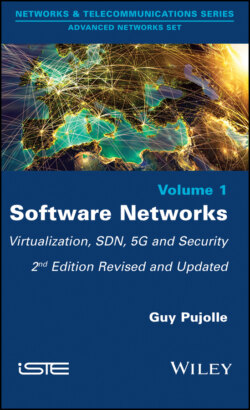Читать книгу Software Networks - Guy Pujolle - Страница 27
2.3. NFV (Network Functions Virtualization)
ОглавлениеThe purpose of NFV (Network Functions Virtualization) is to decouple the network functions from the network equipment. This decoupling enables us to position the software performing the control of a device on a different machine than the device itself. This means we can place the operational programs of a machine in a datacenter within a Cloud. Standardization is being done by a working group from the ETSI, which is a European standardization body, but in this particular case, the project is open to all operators and device manufacturers from across the world. Over 200 members are taking part in this standardization effort. The objective of this initiative is to define an architecture that is able to virtualize the functions included in the networking devices, and to clearly define the challenges needing to be overcome. The standardization tasks are being carried out by five separate working groups, described in detail below.
The first group, “Architecture of the Virtualization”, has the objective of producing a reference architecture for a virtualized infrastructure and points of reference to interconnect the different components of that architecture. The second group, “Management and Orchestration”, is charged with defining the rollout, instantiation, configuration and management of network services that use the NFV infrastructure. The third group, “Software Architecture”, aims to define the reference software architecture for the execution of virtualized functions. The fourth group, “Security Expert Group”, as the name suggests, works on the security of the software architecture. Finally, the last group, “Performance and Portability Expert Group”, needs to provide solutions to optimize performances and manage the portability of the virtual machines representing the functions of this new environment.
Figure 2.8 shows a number of appliances handled by NFV, such as firewalls or SBCs (Session Border Controllers). These functions are moved to a powerful physical machine or to a virtual machine in a datacenter.
Figure 2.8. NFV (Network Functions Virtualization)
Figure 2.9 goes into a little more detail as to the machines whose functions are externalized. ETSI’s aim is to standardize the virtual machines used to perform these functions. The power of the server determines the rate at which the functions are executed. This makes sense for the functions of a firewall or deep packet inspection (DPI), which require extremely high processing power to determine the applications passing through the network in real time.
Figure 2.9. NFV machines
